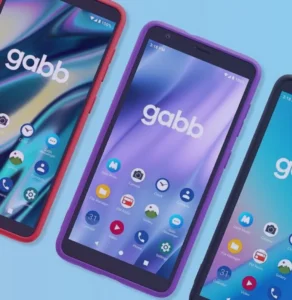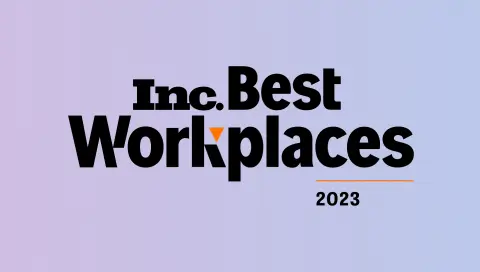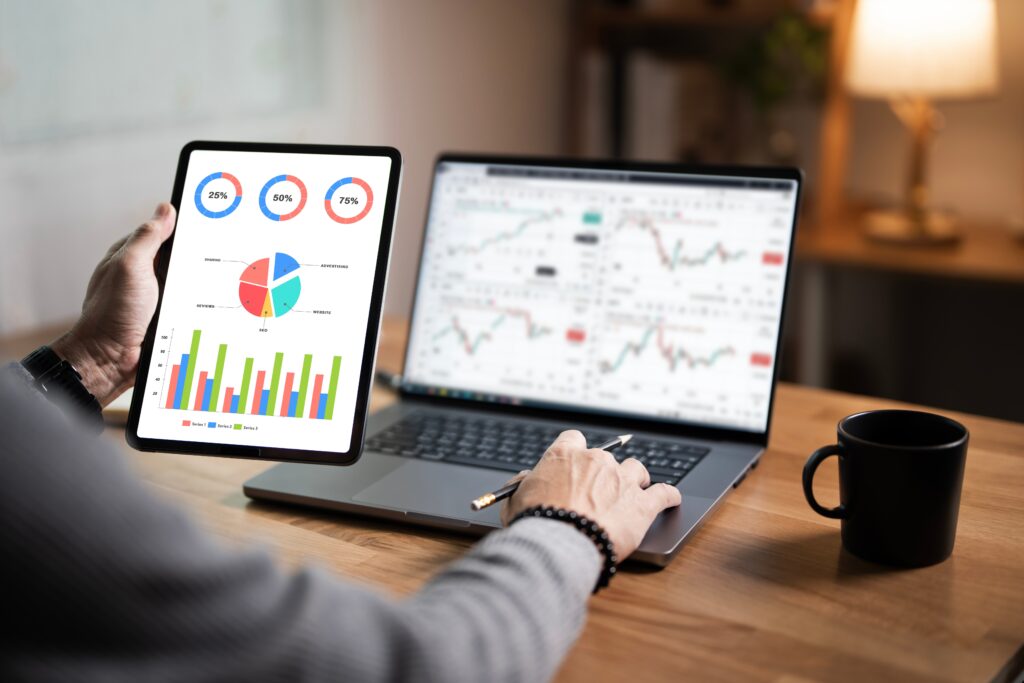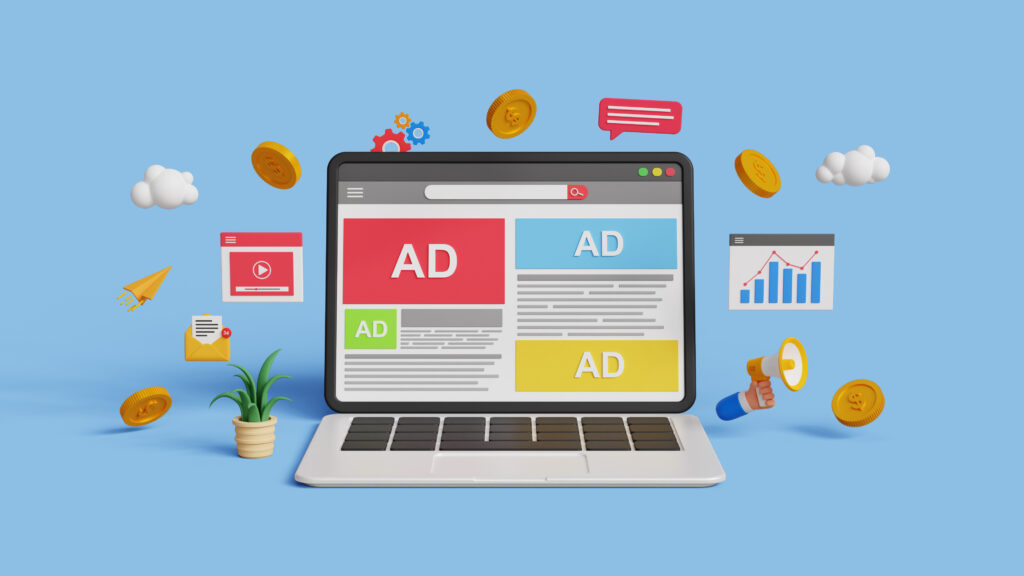In 2025, the advertising landscape continues to evolve, and brands face a choice between direct and programmatic advertising. Both methods have their own strengths and weaknesses, making it essential to understand how they work and when to use each.
This article breaks down the differences and helps you decide which strategy might be best for your campaign.
What is Direct Advertising?
Definition and Overview
Direct advertising is the old-school way of buying ad space. Instead of using fancy algorithms, advertisers talk directly to publishers to get their ads shown. It’s all about human interaction and negotiating deals. Think of it as going to a farmer’s market instead of a supermarket for your ad placements. You know exactly where your ad is going to be, and you have a say in the price.
Benefits of Direct Advertising
Direct advertising has some pretty solid perks. For one, you get control. You decide exactly where your ad appears, which is great for brand safety. Plus, you can build relationships with publishers, which can lead to better deals down the road. Here’s a quick rundown:
- Direct control over ad placement
- Stronger brand safety
- Potential for relationship building with publishers
- Access to premium ad inventory
Direct advertising is like having a tailored suit made. It fits perfectly, but it takes more time and effort than buying off the rack.
Challenges of Direct Advertising
Of course, direct advertising isn’t always easy. It can be time-consuming, since you’re doing all the negotiating yourself. It also might cost more than programmatic, especially if you’re targeting a broad audience. Here’s a table showing a quick comparison:
| Feature | Direct Advertising | Programmatic Advertising |
| Control | High | Medium |
| Cost | Higher | Lower |
| Time Investment | High | Low |
| Audience Reach | Narrower | Broader |
So, while you get more control, you also have to put in more work and potentially spend more money.
What is Programmatic Advertising?
How Programmatic Works
Programmatic advertising is all about using automated technology to buy and sell ad space. Instead of manually negotiating deals, algorithms do the work. At the heart of it all are Demand-Side Platforms (DSPs). These platforms let advertisers bid on ad space across tons of websites and ad networks. When someone visits a webpage, an auction happens instantly. The highest bidder gets to show their ad. It’s a super-fast process that helps advertisers get the best prices and reach the right people. Data Management Platforms (DMPs) also play a big role. They gather and analyze user data, which helps brands fine-tune their targeting. By understanding demographics and browsing behavior, advertisers can serve personalized ads that are more likely to grab attention.
Advantages of Programmatic Advertising
Programmatic advertising offers several key benefits over traditional methods.
- It’s often more cost-effective because automated bidding keeps prices competitive.
- It’s scalable, letting you reach large audiences across many websites and ad networks.
- It uses behavioral data to target ads to very specific audiences.
- Campaigns can be adjusted in real-time based on how they’re performing.
- It cuts out manual negotiations, saving time and resources.
Programmatic advertising is great for brands that want to expand their reach and make decisions based on data. It allows for efficient ad spending and precise targeting, leading to better results.
Common Misconceptions
One common myth is that programmatic advertising is only for big companies with huge budgets. That’s not true! Even smaller businesses can maximize both their budget and visibility using programmatic, especially by working with a partner like Version2, which can provide access to different DSPs at a lower cost than going directly through them.
Another misconception is that it lacks transparency. While there can be challenges, advancements in technology are making it easier to track where your ads are showing and how they’re performing. If you work with a partner, you can ask for transparency in your reporting and analytics, and they should provide you with results.
Some people also think it’s all about real-time bidding (RTB), which doesn’t allow you to control on which sites your ads place, but there are other options like private marketplaces (PMPs) that offer more control and exclusivity.
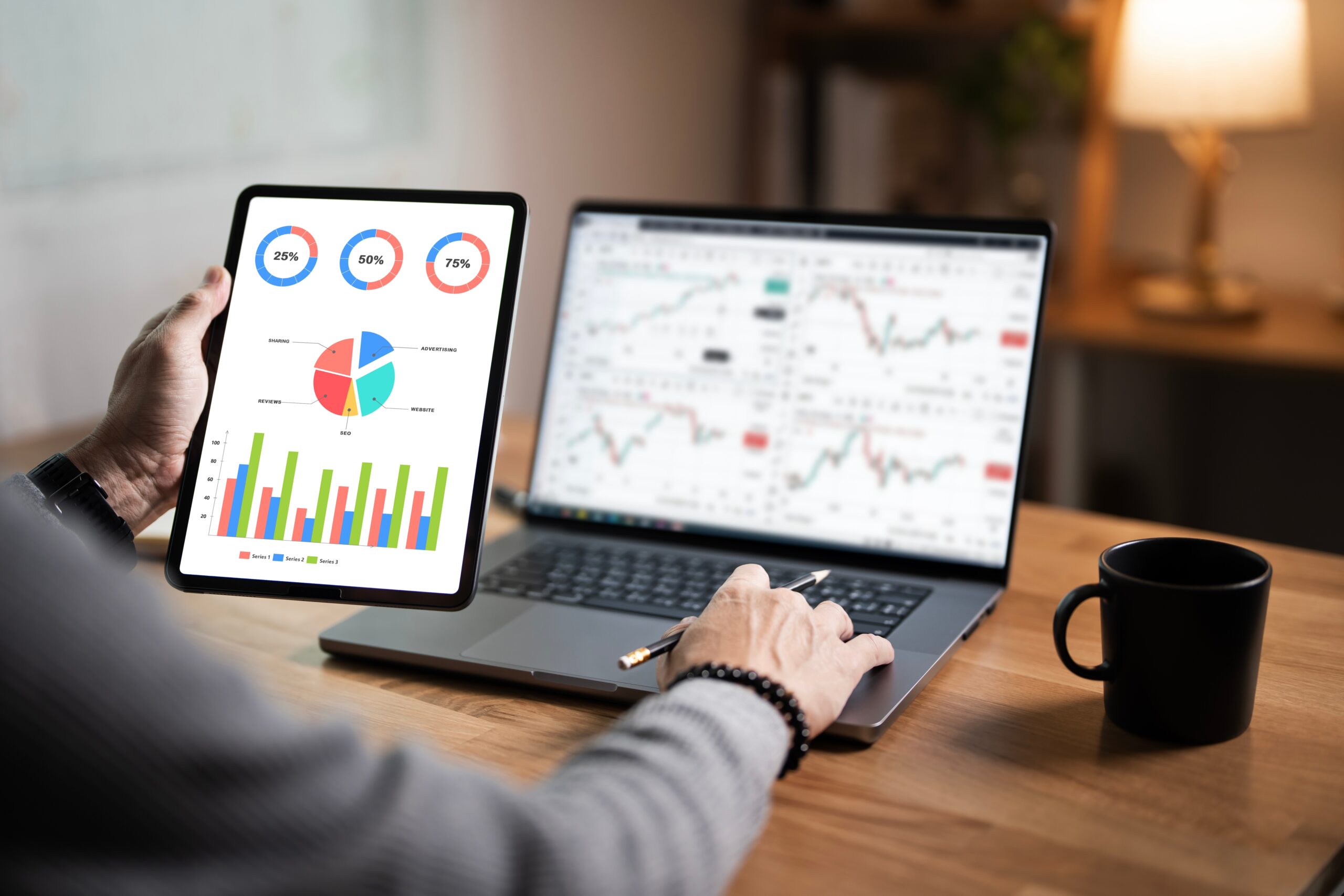
Key Differences Between Strategies
Control and Flexibility
Direct advertising gives you a lot of say in where your ads show up. You pick the exact websites or platforms. Programmatic? Not so much. It’s more hands-off, letting algorithms do their thing, unless you spend more on a PMP or Programmatic Guaranteed deal. This difference in control is a big deal, depending on how picky you are about placement.
Cost Structures
Direct advertising often means fixed rates. You know what you’re paying upfront, but it can be pricier. Programmatic uses real-time bidding, so costs can fluctuate. Sometimes you get a bargain, sometimes not. It really depends on the auction.
Targeting Capabilities
Direct lets you target specific audiences based on the site they’re visiting. Think of it like advertising fishing gear on a fishing website. Programmatic uses data and algorithms to target people based on their behavior across the web. It’s like following someone around with ads based on what they’ve been searching for.
Choosing between direct and programmatic really boils down to what you value most. Do you want tight control and guaranteed placement, or are you okay with a bit less control for potentially lower costs and broader reach? It’s a trade-off.
When to Choose Direct Advertising
When You Need Guaranteed Ad Placements
Direct advertising shines when you need guaranteed ad placements. Think about it: you’re launching a new luxury product and want to be seen on high-end websites only. That’s where direct buying comes in. It’s about securing specific spots on websites or in publications where your target audience hangs out. It’s also great for building relationships with publishers, which can lead to better deals and more creative opportunities down the road.
When You Know Your Audience
Direct advertising is a solid choice if you have a very specific audience in mind and know exactly where they consume content. For example, if you’re targeting senior executives, you might want to advertise directly in business journals or financial news sites. This approach lets you bypass the broad reach of programmatic and focus on quality over quantity. It’s about precision targeting, even if it means a smaller overall audience.
When You Want Brand Safety and Control
Brand safety is a huge concern for many advertisers, and direct buying offers a level of control that programmatic can’t always match. With direct deals, you know exactly where your ads will appear, reducing the risk of your brand being associated with inappropriate or harmful content. This is especially important for brands that are highly sensitive to their image and reputation. Direct advertising with premium publishers gives you more peace of mind.
When to Opt for Programmatic Advertising
When You Want to Reach a Broad Audience
Programmatic advertising really shines when you need to reach a broad audience efficiently. It’s perfect for campaigns where scalability is key, like product launches or brand awareness initiatives. Think about it: instead of manually negotiating with individual publishers, you can use algorithms to find and bid on ad space across a huge network of websites and apps. This is especially useful for performance-driven campaigns, such as e-commerce or lead generation, where you must maximize budget and visibility.
When You Want Scalability and Efficiency
Programmatic advertising is all about automation, and that means serious gains in both scalability and efficiency. Programmatic provides:
- Reach: Access a vast network of ad spaces, far beyond what direct buys can offer.
- Speed: Real-time bidding (RTB) means ads are bought and placed almost instantly.
- Automation: Reduces the need for manual negotiation and management, freeing up your team’s time.
Programmatic lets you run ads at high traffic hours, enhancing performance and ad spend. You can also set your campaign to run multiple creatives and use triggers to change creatives more easily for a dynamic contextual ad with superior performance.
When You Want Real-Time Data Utilization
One of the biggest advantages of programmatic is the ability to use real-time data to optimize your campaigns. You’re not just setting it and forgetting it; you’re constantly learning and improving. This means you can serve personalized ads that are more likely to convert.
Here’s how it works:
- Data Collection: Programmatic platforms gather data on user behavior, demographics, and more.
- Analysis: Algorithms analyze this data to identify patterns and trends.
- Optimization: Campaigns are adjusted in real-time based on these insights, improving performance.
This constant feedback loop allows you to fine-tune your targeting, bidding strategies, and ad creative for the best possible results. It’s a game-changer for anyone who wants to get the most out of their advertising budget.
Combining Direct and Programmatic Approaches
It doesn’t have to be an either/or situation. In fact, combining direct and programmatic strategies can give you the best of both worlds. This way, you can maximize your reach while still keeping a handle on brand safety and premium placements.
Benefits of a Hybrid Strategy
Why choose just one when you can have both? A hybrid approach lets you tap into the efficiency and scale of programmatic while still benefiting from the control and premium inventory that direct buying guarantees placements. Here are a few reasons to consider it:
- Increased Reach: Programmatic can help you find audiences you might miss with direct buys alone.
- Improved Efficiency: Automate parts of your campaign to save time and resources.
- Better Control: Reserve direct buys for key placements where brand safety is paramount.
Tips for Integration
Once you decide on a hybrid strategy, how do you actually make it work? Here are a few tips to get you started:
- Define Your Goals: What are you trying to achieve with your campaign? Increased reach? Improved brand awareness? More conversions?
- Identify Your Target Audience: Who are you trying to reach? What are their interests and behaviors?
- Allocate Your Budget: How much are you willing to spend on each strategy? Consider allocating a larger portion of your budget to programmatic for broader reach, and reserving a smaller portion for direct buys in premium placements.
A well-integrated strategy requires careful planning and ongoing monitoring. Don’t be afraid to experiment and adjust your approach as needed. The key is to find the right balance between automation and control, reach and relevance.
Future Trends in Advertising Strategies
Emerging Technologies
The advertising world is always changing. Artificial intelligence is becoming more important, helping with everything from creating ads to figuring out who to show them to. We’re also seeing more use of augmented reality (AR) and virtual reality (VR) to make ads that are more engaging and interactive. These technologies let brands create experiences instead of just showing ads, which can really grab people’s attention. For example, generative AI is changing how content is made, making it easier to personalize ads for different people.
Shifts in Consumer Behavior
How people use media is changing, and ads need to keep up. More people are using ad blockers, so ads have to be less intrusive and more relevant. People also expect ads to be personalized and to respect their privacy. This means brands need to be more careful about how they collect and use data. They also need to be more transparent about their advertising practices. Consumers are getting smarter and want ads that actually give them something useful, not just try to sell them something.
Here are some key shifts:
- Increased use of ad blockers
- Demand for personalized experiences
- Greater concern for data privacy
Predictions for 2025
Looking ahead, it’s clear that advertising will become more data-driven and automated. Programmatic advertising will continue to grow, but it will also become more sophisticated, using AI to make better decisions about where and when to show ads. We’ll also see more brands combining direct and programmatic approaches to get the best of both worlds. The focus will be on creating ads that are relevant, engaging, and respectful of consumer privacy. It’s all about finding the right balance between technology and creativity to connect with people in a meaningful way. Direct advertising can help build long-term brand loyalty by ensuring consistent and high-quality ad placements.
The future of advertising is about building relationships with consumers, not just selling them products. This means being more transparent, more respectful, and more focused on providing value.
Final Thoughts on Choosing Your Advertising Strategy
In the end, choosing between direct and programmatic advertising comes down to what your campaign needs. If you want more control and a personal touch, direct advertising might be the way to go. But if you’re looking for efficiency and the ability to reach a wider audience quickly, programmatic could be your best bet. Many brands find that a mix of both strategies works best, allowing them to balance control with flexibility.
s you plan your campaigns for 2025, think about your goals, budget, and audience. Partnering with a programmatic expert like Version2 can help you strategically integrate automation while maintaining the insights and performance you need to succeed. With the right approach, you can choose the strategy that fits your needs and helps you get the most out of your advertising efforts.
Frequently Asked Questions
What is direct advertising?
Direct advertising is when companies work directly with publishers to place their ads. This means they negotiate where and how their ads will appear, often building stronger relationships and gaining more control over ad placement.
What does programmatic advertising mean?
Programmatic advertising uses technology to automatically buy ad space online. Instead of negotiating manually, it uses data and algorithms to decide where ads should appear, maximizing efficiency and targeting capabilities.
What are the benefits of direct advertising?
Direct advertising allows for better control over where ads appear, often leading to higher quality placements and stronger brand safety measures.
How does programmatic advertising save money?
Programmatic advertising can be more cost-effective because it uses real-time bidding to secure ad placements at competitive rates. Platforms like Version2’s ORION help advertisers optimize spend further by providing centralized access to multiple premium media sources.
When should I choose direct advertising?
You should choose direct advertising when you need highly specific placements, have a strict budget, or want greater influence over the context in which your brand appears.
Can I use both direct and programmatic advertising together?
Yes, many companies successfully combine both strategies. For example, they might use direct buys for premium placements and programmatic campaigns to extend their reach efficiently. Version 2 can help businesses build integrated strategies that maximize the strengths of both approaches.
